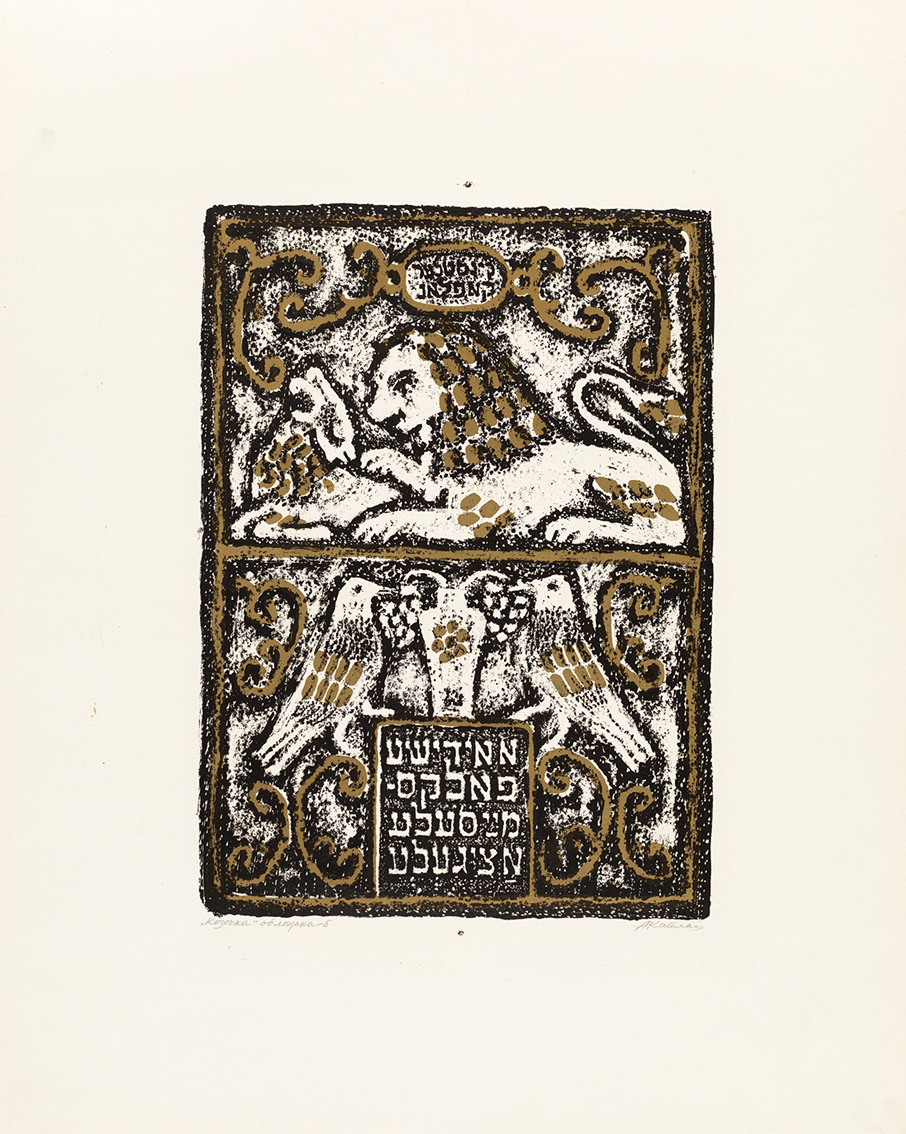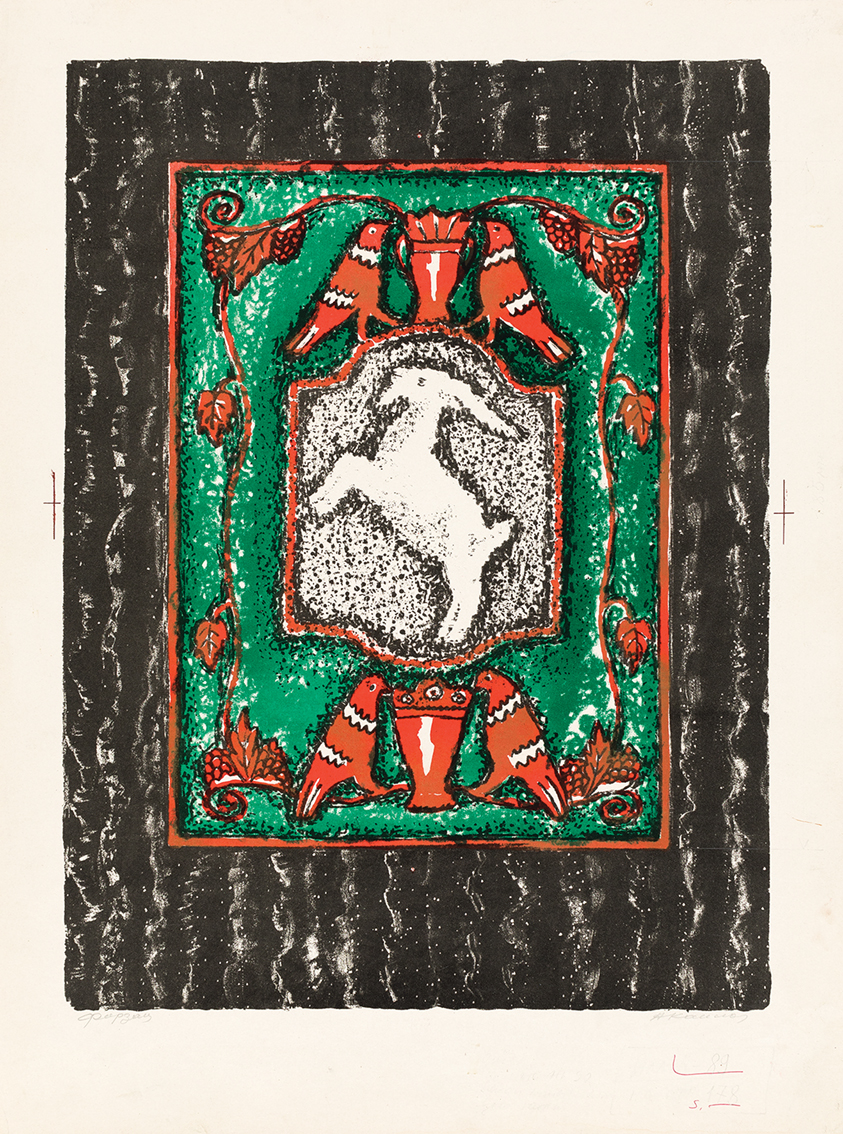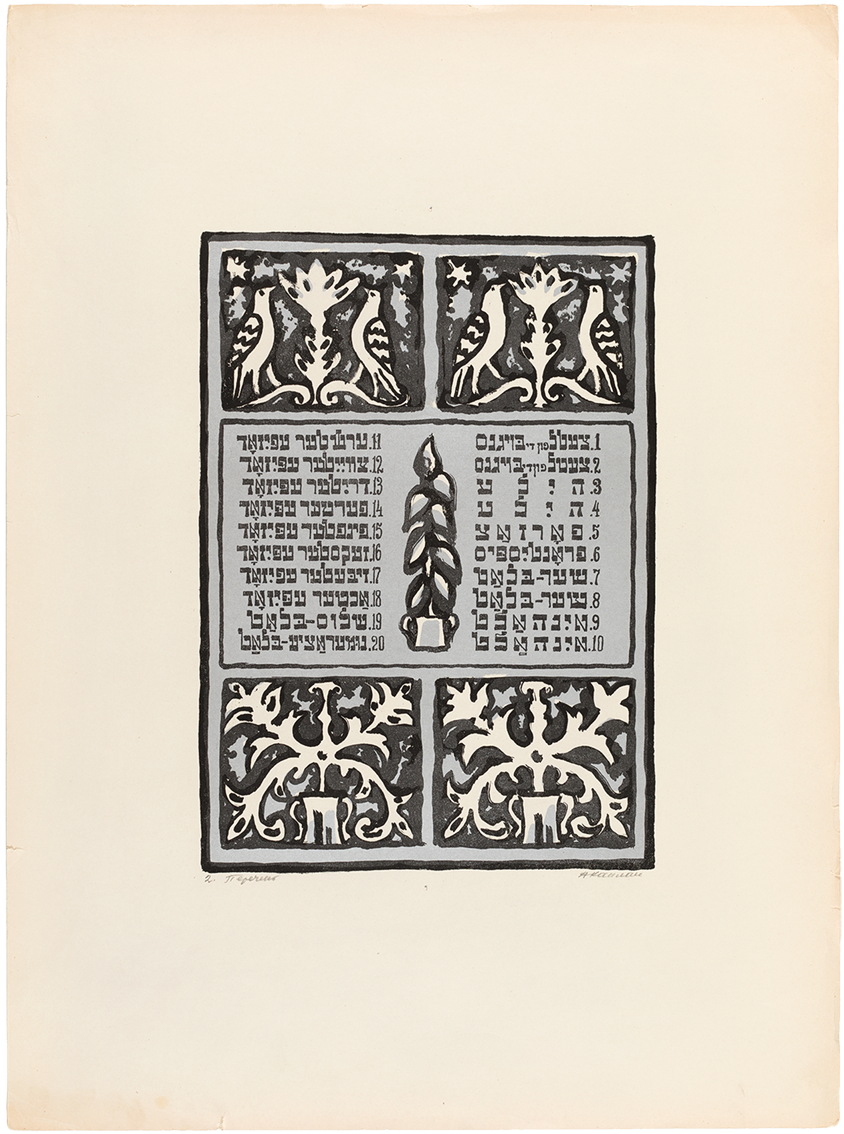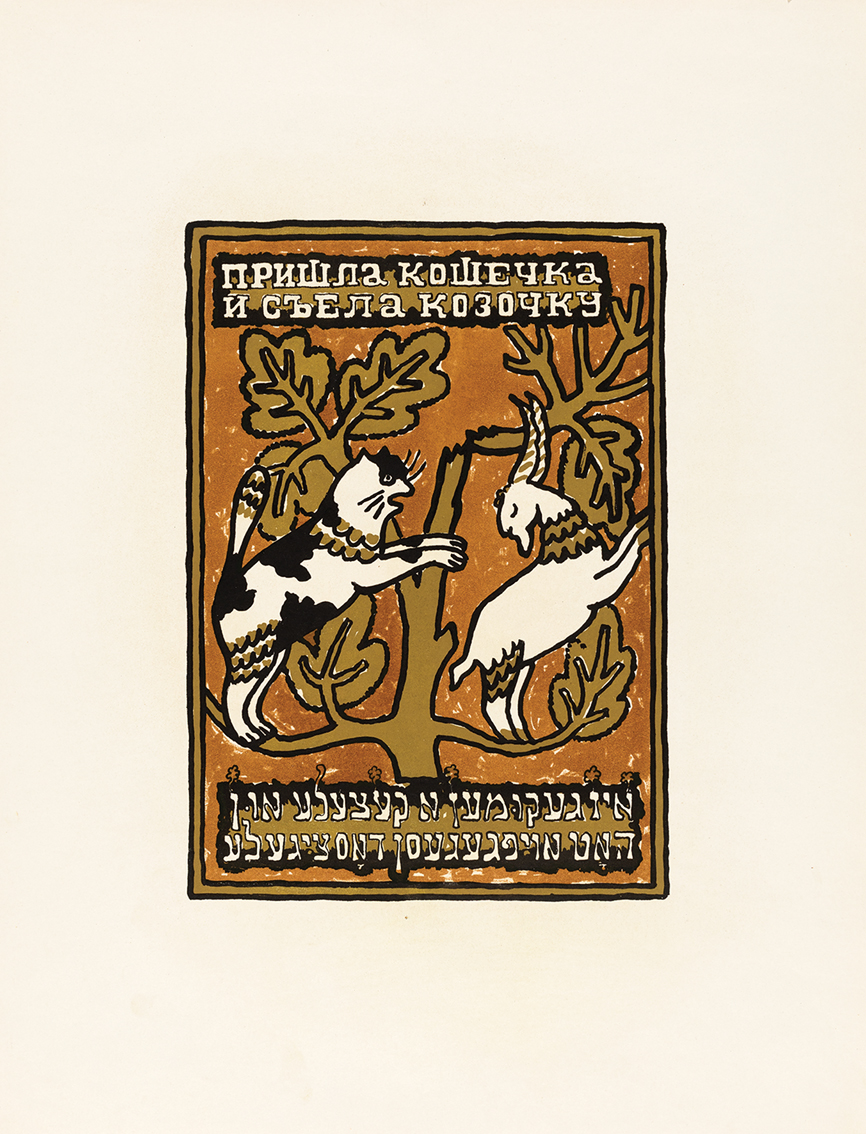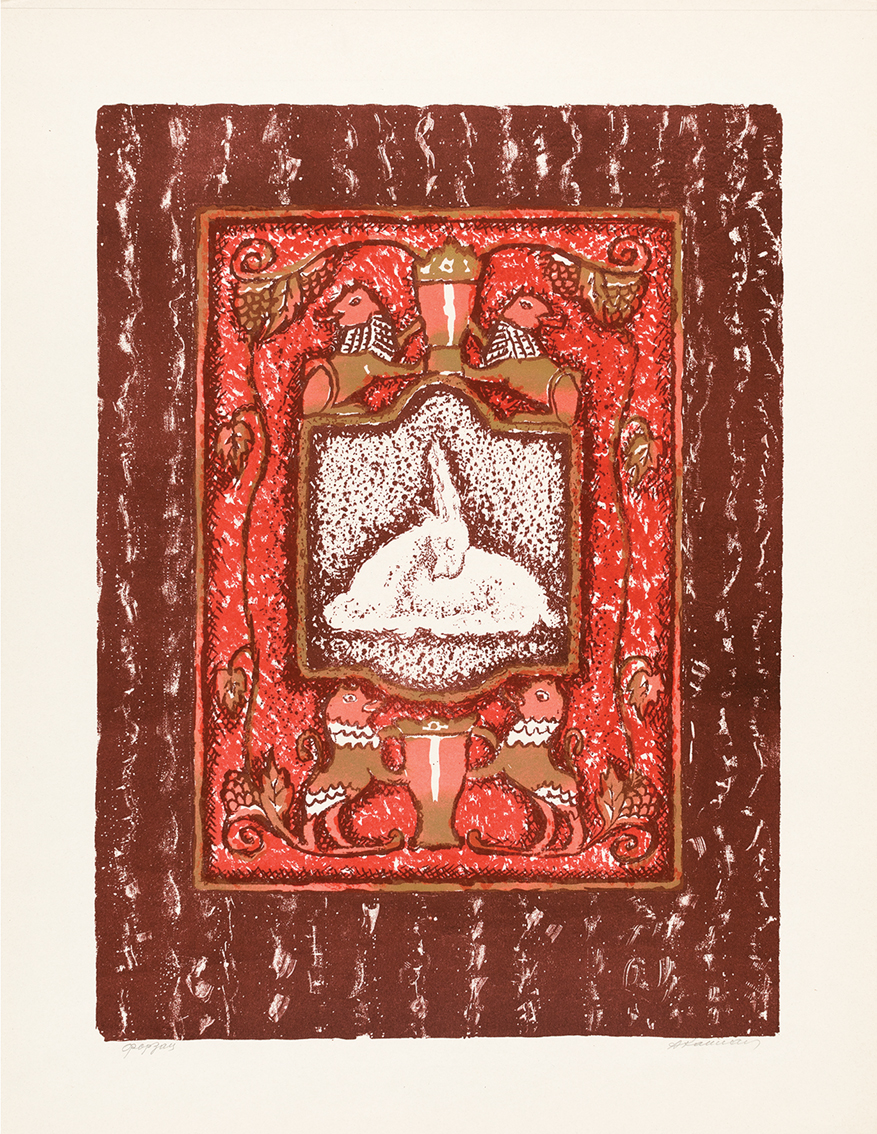The image of a white goat is one that Kaplan, like Chagall before him, returned to repeatedly in his artwork. In various forms and sizes, goats appear in Kaplan’s drawings of Rogachov, in many of his later illustrations, and on the cover of Chad Gadya.
Kaplan worked on this series, based on the popular Passover Haggadah song, from 1957 to 1961. Chad Gadya is a strange and haunting song that addresses the topics of vengeance and retaliation. Though seemingly simple, there exist numerous interpretations of the song, relating the narrative to the history of the Jewish people and emphasizing that there is law and there is a judge of the law.
Surprisingly, in his illustrations, Kaplan stops at the line “Then along came the ox and drank the water.” He then skips the next two parts of the song, the one that refers to the shochet (Jewish butcher) who slaughters the ox, as well as the line about the angel of death killing the shochet. He also changes the final stanza of the song from “Then came God and killed the angel of death…” to “A man came and harnessed the ox.”
In the 1981 German edition of Kaplan’s Chad Gadya, the editor interpreted these changes as a way for Kaplan to express “a working man’s quest for peace”. The editor then explains, “Kaplan’s artwork shows a chain reaction of violence, but also the overcoming of violence by the working man who strives for harmony".
Yet the explanation for Kaplan’s changes may be quite different. Kaplan was the son and grandson of Jewish butchers - and his closest family murdered by the Nazis. He did not want to depict Jewish butchers as murderers – or those being murdered. There was sufficient murder in his time as it was.
The last stanza, the one that excludes God and instead speaks of man, can be explained by the conditions of Kaplan life under vigilant Soviet censors. In fact, in his 1961 preface to Kaplan’s collection of Tevye lithographs, Ilya Ehrenburg does not even mention the word “Jew” to ensure that his introduction would not be rejected by censors. Kaplan’s choice to not include any reference to God in his version of Chad Gadya now becomes clearly understandable.
Finally, in illustrating Chad Gadya, Kaplan uses Hebrew letters and drawings of goats, lions, birds and other animals replicating carved artwork often found on tombstones in Jewish cemeteries in Eastern Europe. These images were often used to symbolize life beyond death. In the Aesopian language that he was forced to use, Kaplan includes the Divine in his Chad Gadya after all.

